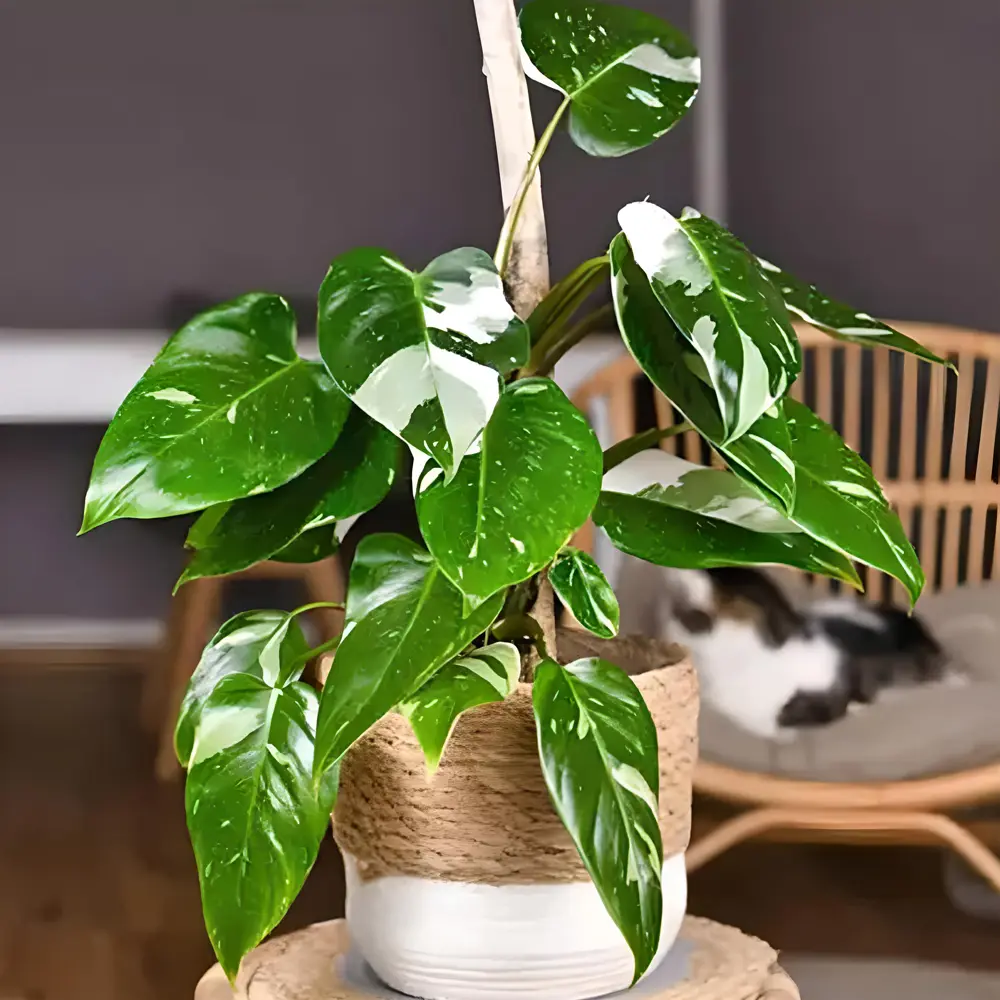Why Are Their Holes in My Philodendron Leaves? (Causes and Solutions)
Philodendron owners often encounter perplexing issues with their beloved plants, including the mysterious appearance of holes in the leaves. While some might attribute this phenomenon to natural growth patterns, such as fenestrations, others must consider less benign causes like pest infestations or environmental stress. Diseases and pests, for example, can wreak havoc on the foliage of philodendrons, necessitating immediate attention and specific treatments.
Similarly, inappropriate light exposure or humidity levels can compromise plant health. Understanding these causative factors is essential, but one wonders how to effectively differentiate and tackle these problems to restore or maintain the lush appearance of their philodendron.
Identifying Natural Holey Varieties

Why do some philodendron varieties naturally exhibit holes in their leaves?
The presence of holes, or fenestrations, is primarily an adaptive feature rather than a defect. These unique perforations allow light to pass through the thicker canopy down to the lower leaves, enabling more efficient photosynthesis.
In their natural rainforest habitats, these holes also help reduce resistance to strong winds and heavy rainfall, allowing the leaves to endure harsh weather conditions without sustaining damage.
Among the various species, Philodendron monstera and Philodendron adansonii are notable for their distinctively holey appearances.
Understanding these natural traits can help enthusiasts appreciate their aesthetic and functional roles within the plant’s survival strategy in diverse environments.
Disease-Induced Leaf Damage
How do diseases contribute to the formation of holes in philodendron leaves?
Diseases such as fungal infections, leaf spot diseases, and Anthracnose can create significant damage to philodendron foliage. These ailments often start as small spots or blemishes that eventually grow and perforate, leaving holes in their wake.
Fungal infections thrive in moist environments, making overwatered philodendrons particularly susceptible. Leaf spot diseases cause brown or black spots that rot through the leaf tissue. Anthracnose, a fungal disease, leads to dark, sunken lesions that perforate leaf surfaces.
To combat these issues, infected leaves should be promptly removed using sterilized tools, and fungicides may be applied to protect remaining healthy foliage and prevent further spread.
Managing Pest Infestations
Managing pest infestations in philodendrons involves identifying and addressing common culprits such as mealybugs, aphids, and spider mites that cause leaf damage and holes.
To begin with, inspect your plant regularly to catch infestations early. Mealybugs can be removed by dabbing them with a cotton swab soaked in rubbing alcohol. For aphids and spider mites, a strong spray of water can dislodge these pests, followed by the application of insecticidal soap or neem oil to prevent their return.
Treat all plant surfaces thoroughly, as pests often hide on the undersides of leaves. Consistent monitoring and treatment are key to maintaining the health of your philodendron and preventing further damage from pests.
Addressing Environmental Stressors
Addressing environmental stressors is crucial to prevent damage and safeguard the health of philodendron plants. Overexposure to sunlight can scorch leaves, creating holes and discoloration. To mitigate this, position your philodendrons where they receive indirect, filtered light.
Similarly, low humidity can stress these plants, leading to dry, holey leaves. Using a humidifier or placing a water tray near your plant can help maintain adequate moisture levels.
Additionally, excessive fertilizer contributes to salt buildup in the soil, which can burn roots and affect leaf integrity. To avoid this, make sure you fertilize philodendrons sparingly and flush the soil periodically to remove excess salts, keeping the soil environment balanced and conducive for healthy growth.
Maintaining Philodendron Health
Maintaining peak health in philodendrons requires consistent attention to their care needs and environmental conditions. Ensuring the right balance of light, water, and nutrients is essential. Philodendrons thrive in indirect sunlight and require well-draining soil to prevent root rot.
Regular watering is vital, but it’s important to let the soil dry out slightly between waterings. Fertilize philodendrons every month during the growing season with a balanced, water-soluble fertilizer to support their lush foliage. Additionally, maintaining humidity around the plant can prevent many common issues.
Regularly inspect for signs of pests or disease and address them promptly to keep your philodendron healthy. By adhering to these care guidelines, your philodendron can grow vigorously and remain vibrant.







